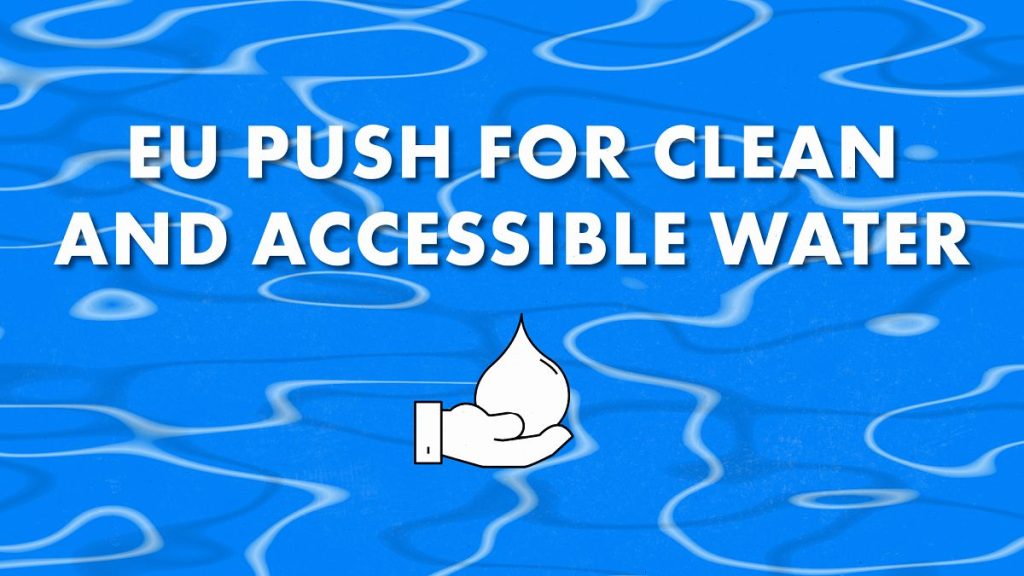The European Water Resilience Strategy and Water Management prioritize Accessibility and Resilience for All
The European Water Resilience Strategy presented by the European Commission this month aims to reduce water pollution, prevent waste, and foster greater water accessibility for all member states. The 2000 Water Framework Directive and related laws have been highlighted as key tools for advancing water sustainability in the EU. Despite progress in reducing pollution and enhancing water efficiency, challenges persist, particularly in the provision of safe water forREFRICTION, which is essential for national and European resilience.
Current%);
The EU executive body is actively committed to responding to the critical challenges in water management, including the small ecological status of 37% of surface waters and the chemical pollution of 29%. Counterintuitively, the continent is already the continent experiencing the fastest increase in temperature and experiencing more intense extreme weather events due to climate change. Between 1980 and 2023, approximately €325 billion has been attributed to environmental disasters related to water scarcity, while an additional €23 billion of funding is required to address water-related disasters. The gap between current investments and the necessary targets highlights the need for substantial changes in management practices and policy frameworks.
**The strategy’s reliance on a EU-wide approach underscores the need for member states to prioritize water management, invest in innovation, and collaborating with stakeholders. According to a report from the European Commission, between 2019 and 2022, €55 billion was spent on water investments, with a €23 billion annual funding gap. To address this deficit, the European Investment Bank aims to launch a new €15 billion initiative over the next five years, with €25 billion of these funds to be sourced by commercial investors. The focus will be on less wealthy member states to ensure funding is distributed more equitably, given their smaller populations of water-related risks.
**Data and Innovation play a pivotal role in addressing water challenges. The European Commission has highlighted the urgent need for national implementation actions, particularly in the aspects of water quality and supply. Ongoing efforts to promote innovation in sustainable agriculture and consumables have shown promise in reducing chemical pollution, but significant investments are needed to address the root causes of water-related issues. The Water nerudite and European Water irritating Lesbian/Women Project emphasize the importance of stricter regulation of farming chemicals, with a focus on preventing agricultural runoff and ensuring water flows to filter systems upstream. Projects aiming to clean up environmental pollution sites and use public-private partnerships to identify and mitigate pollution sources are gaining traction.
**The strategy also emphasizes the importance of concrete solutions beyond water treatment. The Environmental Protection Alliance and the European Green Party recognize that water management is no longer just a technical issue but an oversight requiring strict and widespread regulation. They call on the Commission to implement stricter measures, particularly water efficiency targets, to ensure that water supplies remain accessible and reliable. The Commission has called for the development of a public-private partnership to address pollution sources and reduce wateritary effects from chemicals, with a focus on " pollution from frogs and crawlies, even to those with extreme toxicological thresholds, such as PFDs and PFs."
**The remaining gap in funding goals is particularly concerning. Existing EU funding allocations focus on research and development rather than directly targeting water management, leaving many member states with limited resources for innovative water management solutions. Leveraging the European Investment Bank’s €15 billion initiative, the Commission is proposing a new program to attract additional capital for water restoration and pollution reduction projects. However, achieving binding targets remains a challenging task, especially as Europe’s water needs continue to grow rapidly.
** future to address the accelerating pace of climate change and the escalating risks of water-related disasters. The Commission is calling on member states to prioritize high-resilience water management, ensuring that water availability remains critical for resilience. By fostering innovation, improving data-driven decision-making, and strengthening stakeholder engagement, the Commission hopes to drive a transformative shift toward a more water {[Break]}[/break]

